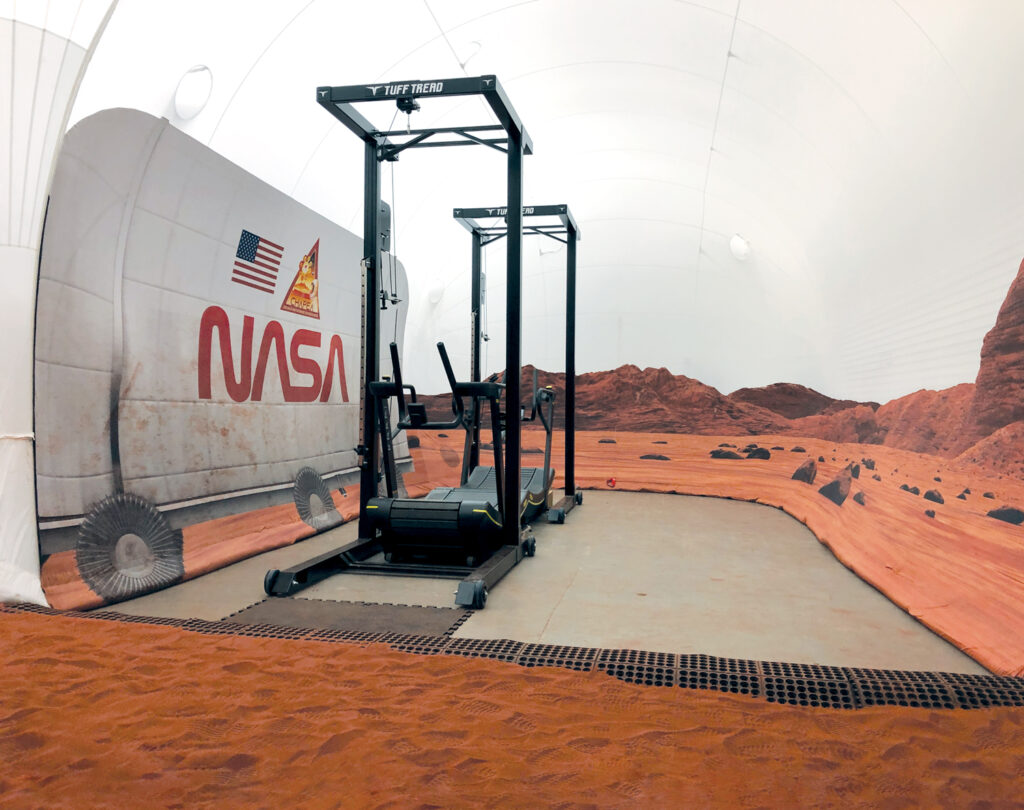
The first image that springs to mind when inflatables are mentioned is likely bouncy houses or holiday decorations tethered on people’s lawns—unsurprising, since these are typically their most visible manifestations. But the forms inflatables assume and the purposes they can serve are astoundingly varied.
Consider the negative pressure tents from Stretch Marquee and Fabric Structures Inc. Headquartered in Gold Coast, Australia (but with locations in the U.S., Canada, the U.K. and New Zealand), the company manufactures inflatable structures, stretch tents, retractable tunnels and various fabric creations, says Daniel Hunt, general manager.
Those tents range in size from 3 by 3 meters up to 6 by 7 meters (97 to 452 square feet), and custom sizing is also offered. They are often deployed for temporary housing, mobile hospitals, isolation rooms and decontamination chambers, kitchens and dining areas, and more.
Then there are the company’s rapid deployment structures designed for military, fire and rescue, and emergency uses. Available in sizes from 3.5 up to 12 meters (12–39 feet) wide, depending on the model, these have performed as refugee camps, field hospitals, base camps, decontamination units—anywhere solutions are needed for rapid-deployment situations.
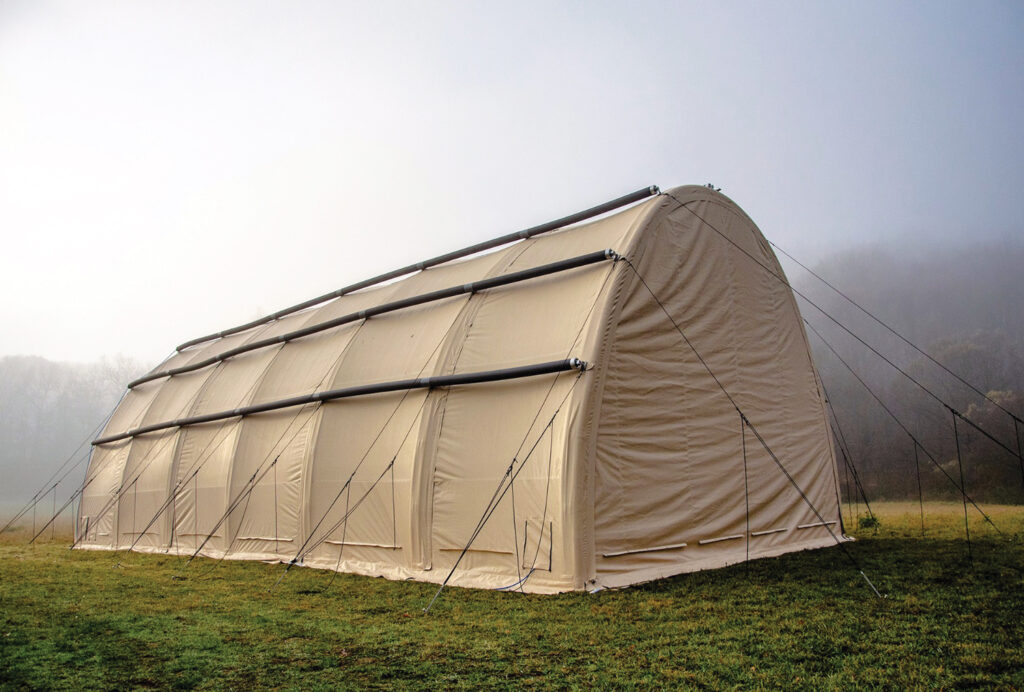
Inflatable textiles are also being utilized by agencies like NASA, which commissioned a Mars simulation environment from Pneuhaus, a Providence, R.I., art studio that creates “immersive inflatable artworks,” says Levi Bedall, co-founder. Designed for the Crew Health and Performance Exploration Analog mission (CHAPEA), the environment is intended to replicate what a crew would experience during a yearslong stay on Mars.
It was commissioned by NASA in 2021 and installed in 2022; the mission began in June 2023. Bedall says the highly technical, detailed project required a custom solution including:
- A panoramic print of the Martian landscape, which fills the bottom half of the structure
- A base embedded in red sand, “templated to fit water barricades at irregular angles,” says Bedall
- Posts that project through the envelope, each outfitted with multiple cameras
- Two emergency exits
- A tethered top that ensures safety in case of a power outage
“The fabric is a 200-denier translucent nylon for the sky and the Martian landscape is printed on a flexible blackout nylon fabric,” says Bedall, adding that installation took his three-person team three days. “This commission is installed in Houston and is currently being used in the CHAPEA mission for the next two years.”
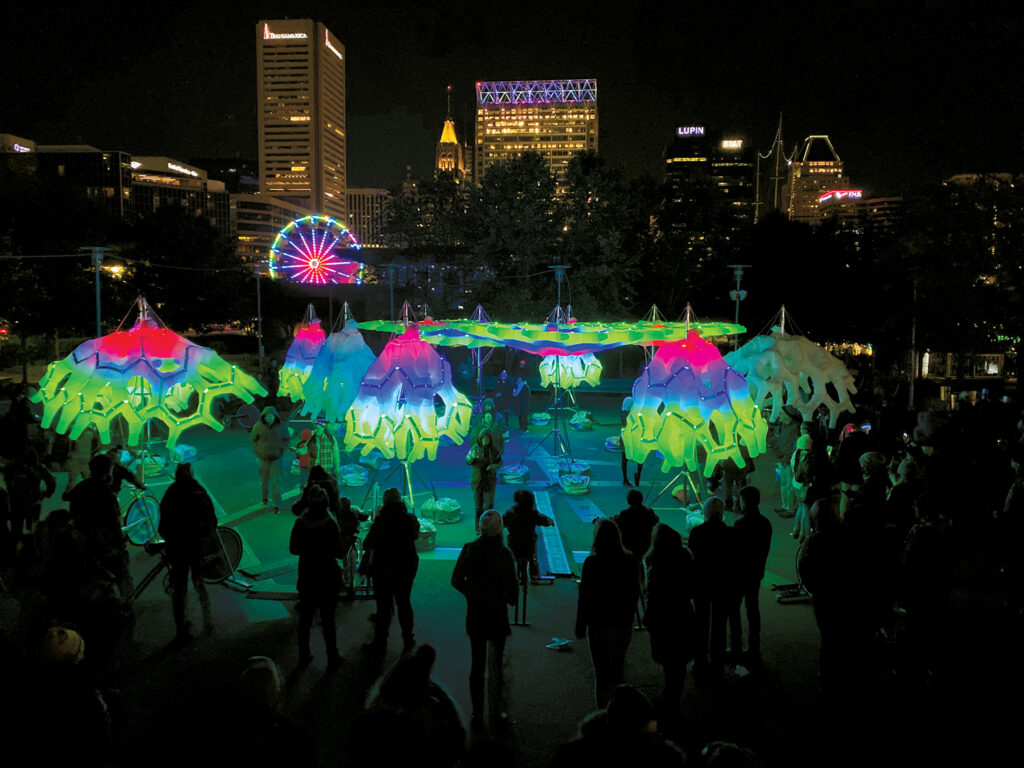
Textile, technology advancements
Bedall mentions several inflatable textile technology advancements, such as lighter-weight PVC-coated polyesters and thin fabrics with sealable coatings, that have facilitated innovation. He describes thermoplastic polyurethane, or TPU, as another “great material” because of its “incredible stretch and melting point properties.”
“The ability to have mobile, lightweight flat panels at high pressure is opening opportunities in every market,” Bedall says. “We’re [also] excited about the development of CNC knitting and how that can be incorporated into inflatables.”
Brandon Hyman, U.S. sales manager for Evolution Dome US, says material advancements have enabled his company to create rapidly deployable inflatable structures, reducing the time required for install and teardown. Headquartered in Rochester, N.Y., the company supplies indoor and outdoor inflatables incorporating non-rip nylon and PVC, including domes, pods, cubes and walls. Recent improvements in stitching quality (the company has sourced a more durable yarn) are also helping extend the lifespan of structures.
Deployed for brand activations, conferences, marketing campaigns, trade shows, corporate and private events, and exhibitions, Evolution Dome’s inflatable structures have also served humanitarian purposes, such as when the company delivered a custom-branded dome to Macedonian Missionary Service, a global relief organization. That organization intends to serve food out of the dome at each site it visits, says Hyman.
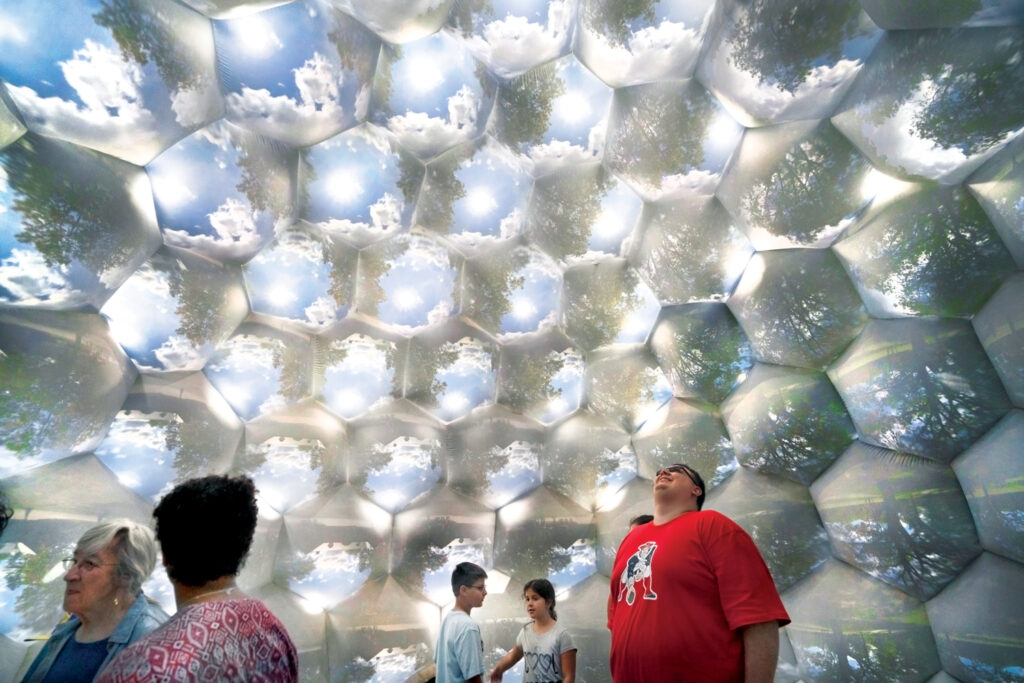
He says Evolution Dome typically sees the biggest demand for its panoramics and its inflatable walls. The latter have an unlimited size capacity and can seamlessly connect to each other, with various points throughout the wall allowing for additional walls to be attached, creating spaces within spaces. Depending on their size, the panoramics can accommodate up to 143 people. Both are frequently used for conference-style theaters.
Long-term and permanent structures are also incorporating inflatable components like the thermo roof system offered by HTS TENTIQ, a global supplier of temporary and permanent marquees and structures servicing the party/event rental, large-scale event production, sports, industrial, disaster relief, military and other industries, says Victor Manzano, senior U.S. sales manager. The company has multiple global locations, with U.S. headquarters in Skokie, Ill., and world headquarters in Kefenrod, Germany.
The thermo roof system is just one of the company’s inflatable products. Designed for any of the flat panel structures HTS TENTIQ offers, the roof is primarily found on Röder and Hocker Big Tents and the LX, SMART and L-Series Warehouses.
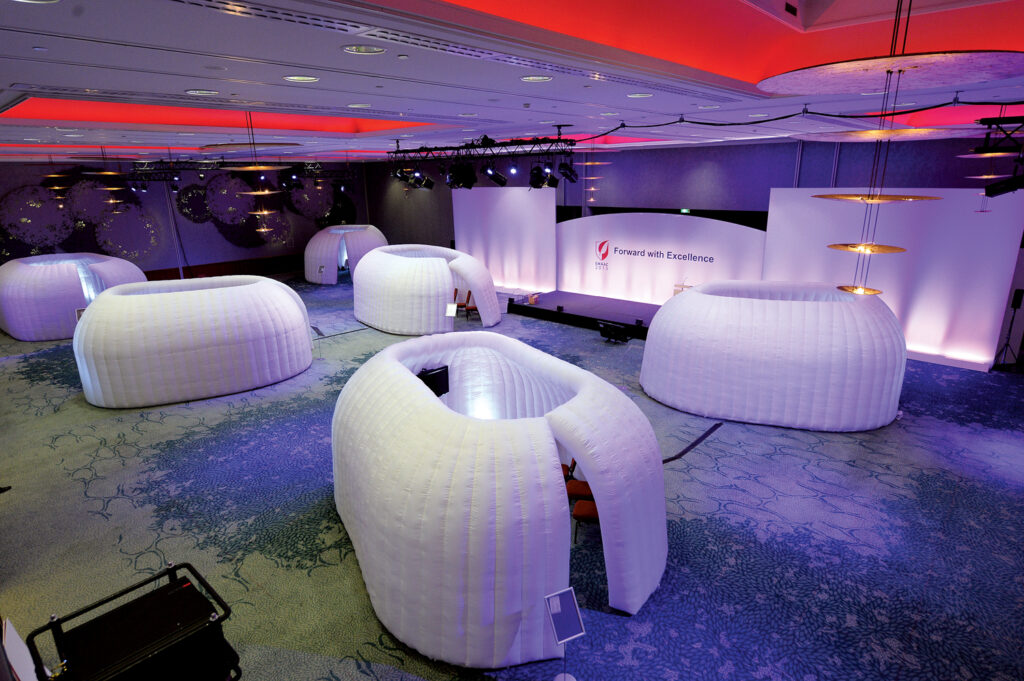
“This roof system consists of two layers of robust, industrial-grade, gloss white, 25-ounce opaque white or 19-ounce translucent white PVC-coated fabric membranes with a tightly woven internal polyester scrim,” says Manzano, explaining the material—certified worldwide for fire-resistance testing—was selected for its high-tensile strength, tight finish, tear resistance and ability to withstand wind, rain and snow conditions.
“Translucence allows a naturally lit environment within the structure during daytime hours, reducing the cost of adding artificial lighting,” he continues. “Opaque allows the ability to have full control over the lighting environment, for applications like a film studio or where UV light could disrupt the product curing process.” (Color options are also available.)
Thermo is intended for insulated structures where there’s a need to minimize the risk of condensation forming on the roof’s interior, he explains. Thanks to its low rate of heat transfer (U value), it achieves this without the application of insulating spray-on foam or fiberglass, “substantially reducing” the time required for building install. It can be used for structures ranging from 5 to 70 meters (16 to 230 feet) in width.
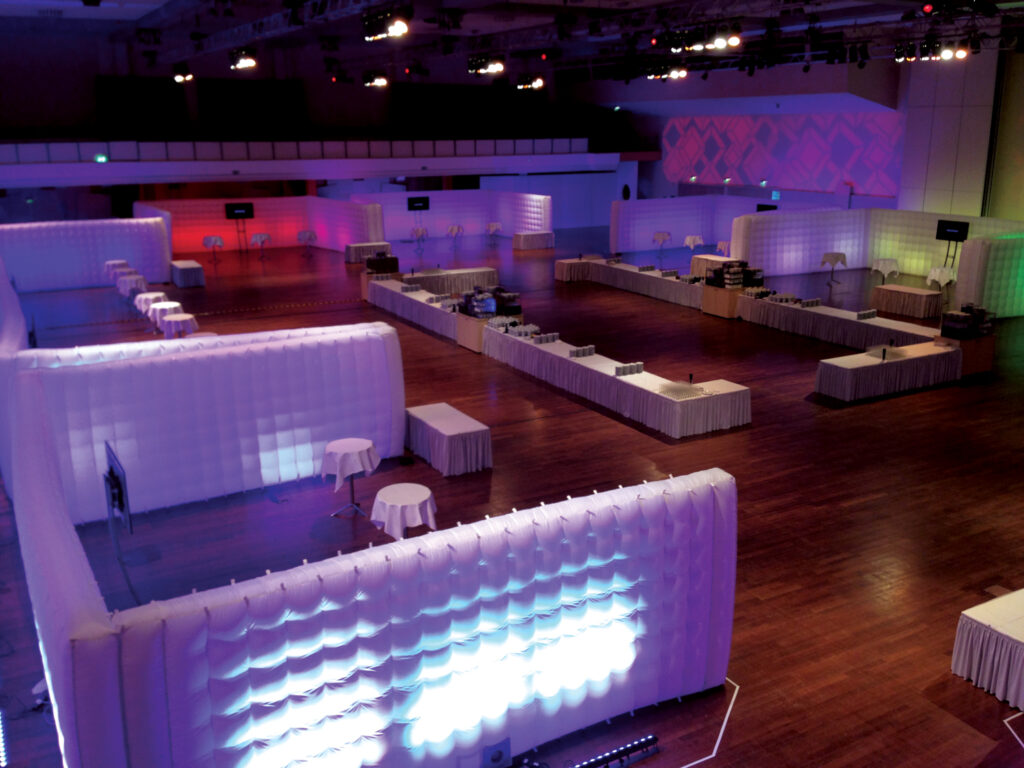
Addressing challenges, anticipating growth
Finding the right material for the roof system wasn’t challenging; the same PVC-coated fabrics are used on most of HTS TENTIQ’s products, says Manzano. Overcoming pressure loss was a larger concern, one the company addressed via the use of automatic low-pressure air compressor pumps designed to consistently maintain pressure. The company is presently testing flexible solar cells that could charge a battery for the pumps, enabling them to operate in the absence of a permanent power supply.
Because the thermo roof uses an air barrier between the PVC-coated layers, Manzano says the system is eco-friendly, especially since it makes alternative forms of insulation like fiberglass or foam—materials that take “lifetimes to decompose, if at all,” he says—unnecessary.
Hunt says eco-friendliness is at the “forefront” for Stretch Marquee and Fabric Structures, adding that the company is increasingly looking at using TPU in its materials, striving to achieve stronger, lighter fabrics.
Currently, for negative pressure tents, the company mainly utilizes PVC and PU-based fabrics. (“Favoring” the latter during production is another way the company prioritizes eco-friendliness, says Hunt.) PVC was selected for the sealed frame tubes because of its “low elasticity and limited breathability,” enabling higher psi loads. The softer and more flexible PU fabrics comprise the tent’s skin.
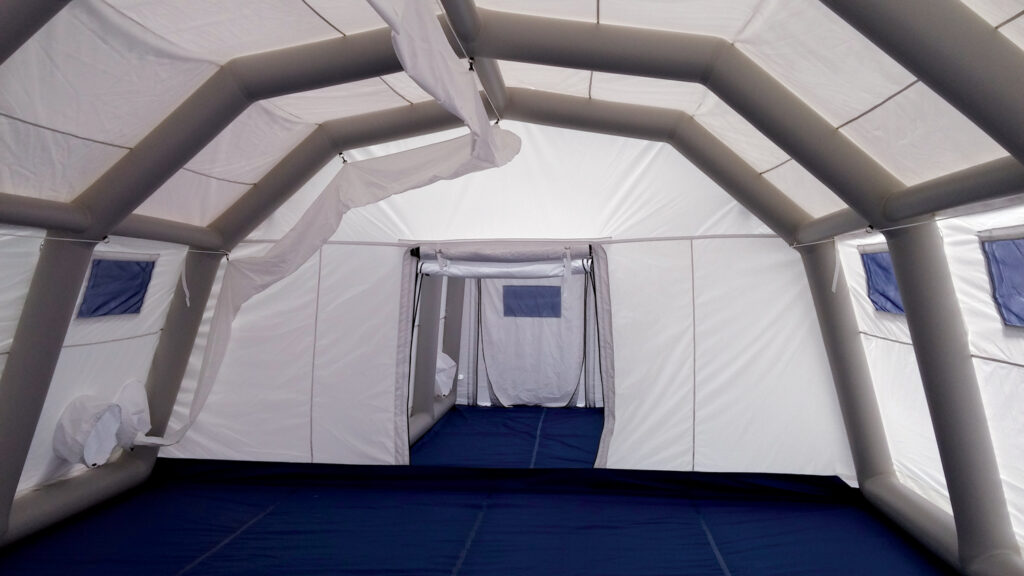
Stretch Marquee’s rapidly deployable tents incorporate a diversity of fabrics, Hunt says.
“The frames feature single- or triple-seamless high-pressure tubes encased in 650-gsm [grams per square meter or .13 pounds per square foot] PVC, functioning akin to a truss frame and capable of sustaining 4-to-8-bar working pressure [58-to-116 psi],” he explains. “Roof materials include 480-gram FR PVC fabric or 650-gram bicolor opaque FR PVC fabric, chosen based on size and specific requirements.”
One challenge that had to be addressed during the design of these tents was the requirement that they be able to withstand temperature extremes ranging from -58 F (-50 C) to more than 158 F (70 C). Designers also concentrated on fabricating lightweight structures with high fire resistance that could be easily transported and installed by “a minimal number of personnel” within a 30-to-60-minute time frame.
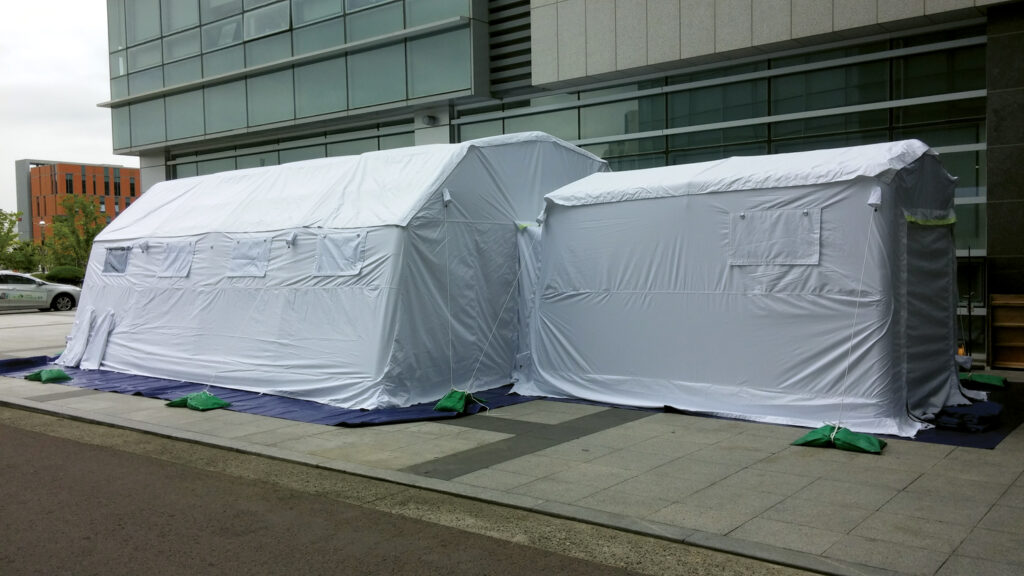
Quick setup and smaller installation crews are among the compelling benefits offered by inflatables in general. For example, Hyman says Evolution Dome’s smaller indoor structures take one person five to 15 minutes to set up; the company’s larger outdoor structures will go up in about 30 minutes to two hours, requiring just four to six people to accomplish the task. Additional benefits found with inflatables are their comparatively lighter weight, which reduces costs associated with transportation and storage, and their mobility, allowing them to be easily taken down and relocated.
“We anticipate a surge in the adoption of inflatables,” says Hunt. “With continuous industry-wide exploration into new fabrics and production methods, a promising trajectory is envisioned.”
Pamela Mills-Senn is a freelance writer based in Seal Beach, Calif.
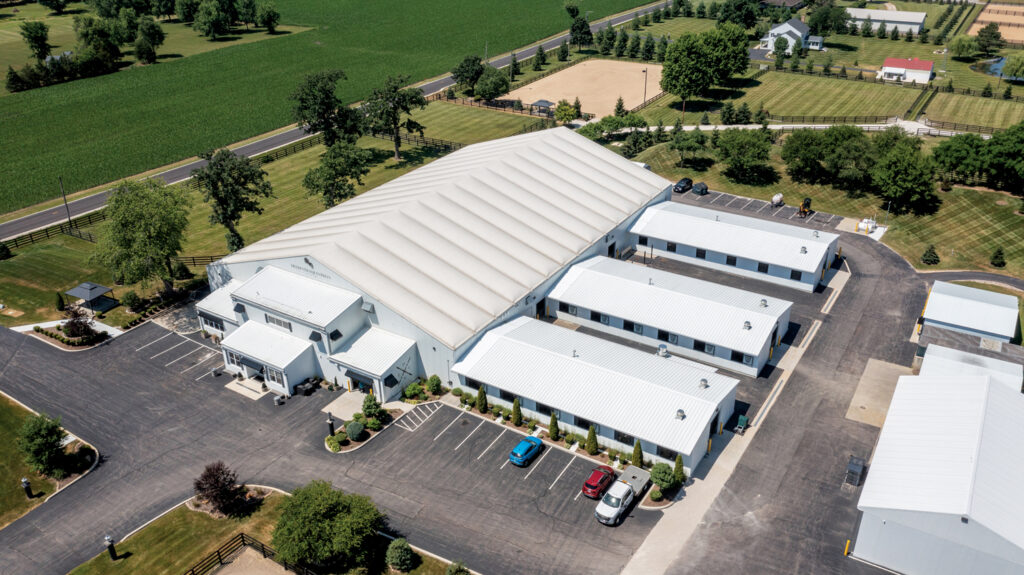
SIDEBAR: Complex and challenging
In need of a training and show arena, the Deerpath Equestrian Club in Batavia, Ill., approached HTS TENTIQ (Skokie, Ill., U.S. headquarters) to see if the company could provide a solution, says Victor Manzano, senior U.S. sales manager.
“The requirements were quite challenging, as they were in need of a 40-meter-by-60-meter [25,833-square foot] structure on 5.2-meter (17-foot) legs, fully insulated and engineered as a permanent building to suffice for 25-psf [pounds per square foot] snow load,” says Manzano.
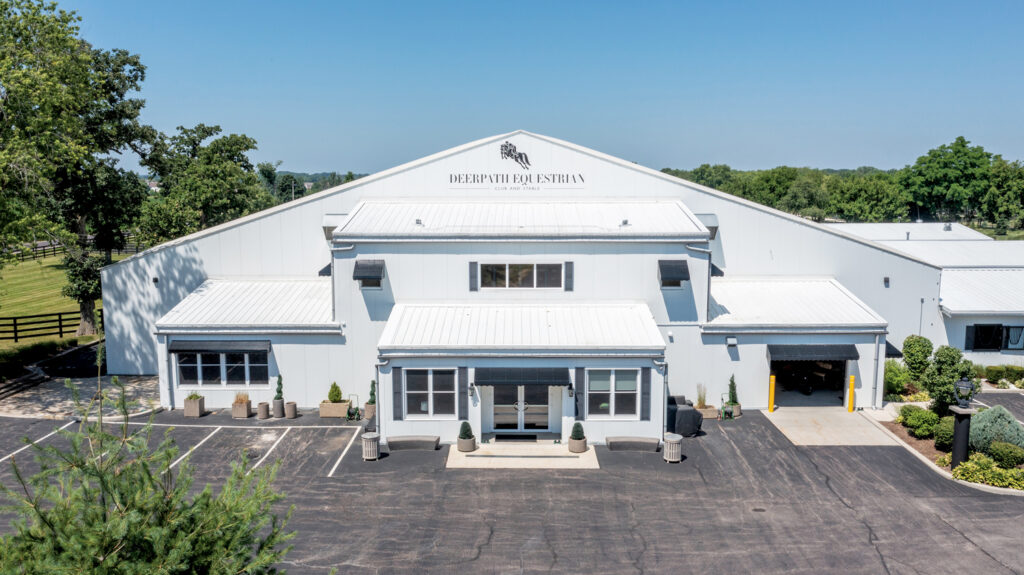
The club also needed five additional structures, including “a 21-meter [69-foot] dodecagonal building for a horse-run carousel trainer,” he says.
With the help of a project manager from the company’s world headquarters in Kefenrod, Germany, the project was installed over a 10-week period, with the training and show arena topped by the company’s translucent vinyl thermo inflatable roof structure. It has remained up since its installation in 2017.
Images: HTS TENTIQ
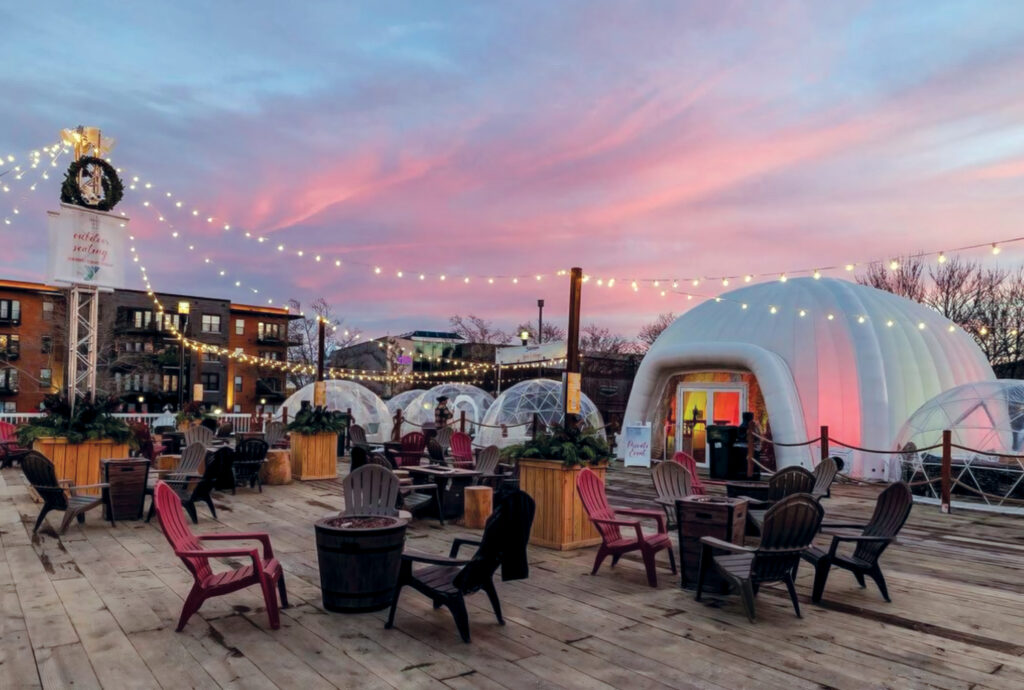
SIDEBAR: Creating a village
he Rochester Holiday Village, held in Rochester, N.Y., takes place each December, with spaces and structures themed for holiday parties. In 2019, Evolution Dome US provided two 8-meter domes and one 10-meter dome—which look like igloos, says Brandon Hyman, U.S. sales manager—each with a different Christmas-style motif. The domes, each accommodating 30 to 45 people, were decked out with couches, specialty tables, coolers and Christmas trees for parties lasting from one to two hours. The team installed the domes Nov. 4, says Hyman, with the event running until Dec. 21.
“This was memorable for us because the event takes place in our backyard,” he says, “and it brings the community together.”
Image: Evolution Dome US
 TEXTILES.ORG
TEXTILES.ORG


